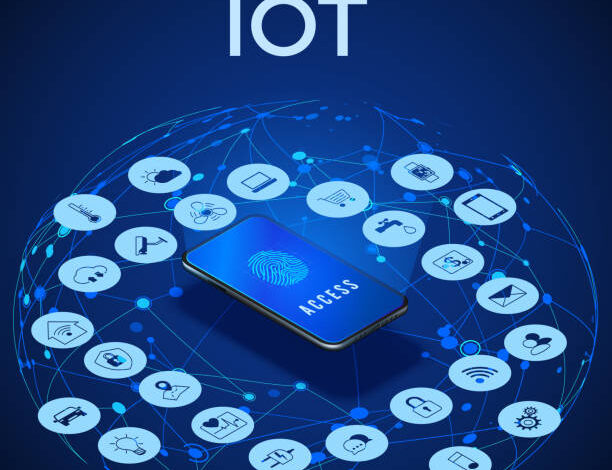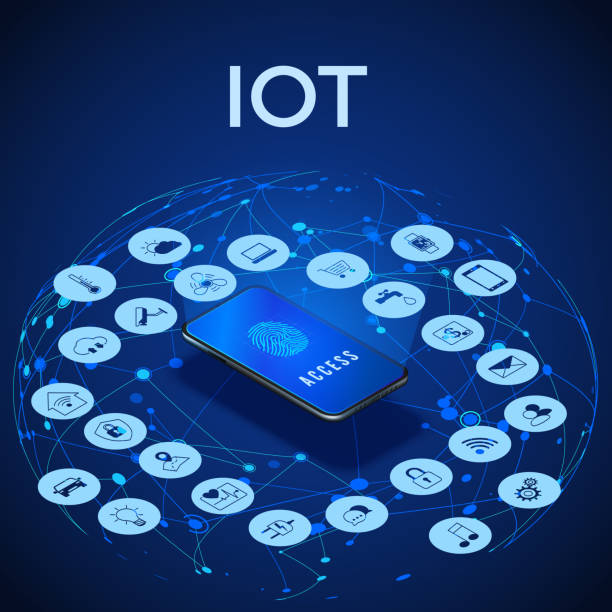
In a world where technological advancements are reshaping industries, the fusion of Internet of Things (IoT) and environmental monitoring emerges as a beacon of hope for safeguarding our planet’s health.
From tracking air quality to conserving wildlife, IoT’s potential in environmental monitoring is boundless.
In this comprehensive guide, we’ll delve into the remarkable ways IoT is transforming sustainability efforts worldwide.
What to know about IoT and Its Impact

IoT: Imagine a network of devices, like smart sensors and cameras, seamlessly connected to exchange information over the internet.
This is IoT, and it’s changing the way we interact with the world around us.
A Greener Tomorrow: By integrating IoT into environmental monitoring, we’re unlocking the power to monitor, analyse, and respond to ecological changes in real-time.
Harnessing IoT for Environmental Monitoring
Real-time Data Collection
Smart Sensors: According to particle.io, IoT-enabled sensors placed strategically in natural ecosystems gather real-time data on temperature, humidity, pollution levels, and more.
Data-driven Insights: This wealth of data provides valuable insights into environmental trends and enables timely decision-making.
Air Quality Monitoring
Breathe Easy: IoT sensors monitor air quality parameters, such as particulate matter and harmful gases, ensuring the air we breathe remains safe.
Urban Insights: Cities use IoT to create air quality maps, identifying pollution hotspots and guiding policies to improve city life.
Water Quality Analysis
Guardians of Waterways: IoT devices in water bodies analyse water quality, detecting pollutants and temperature changes that affect aquatic ecosystems.
Preserving Aquatic Life: With continuous monitoring, we can ensure clean water sources for aquatic organisms and human consumption.
Wildlife Conservation
Connected Habitats: IoT-connected cameras and sensors track wildlife movement, aiding in understanding migration patterns and preserving natural habitats.
Protecting Biodiversity: This data contributes to the conservation of endangered species and maintains the delicate balance of ecosystems.
Disaster Preparedness
Early Warning Systems: IoT networks detect seismic activities and weather changes, providing vital seconds to prepare for natural disasters.
Mitigating Impact: With early warnings, communities can evacuate and authorities can respond effectively, minimising loss of life and property.
Advantages and Challenges of IoT in Environmental Monitoring
Advantages of IoT in Monitoring
Precision Insights: Techtarget.com says IoT’s real-time data collection offers accurate insights into environmental changes, supporting effective responses.
Efficiency Boost: Automation of data collection and analysis reduces manual efforts, enabling researchers to focus on interpretation.
Timely Alerts: IoT’s instant notifications allow for rapid responses to sudden environmental shifts, preventing potential crises.
Challenges in IoT Environmental Monitoring
Data Overload: The copious amount of data collected can be overwhelming, requiring advanced analytics tools for meaningful interpretation.
Privacy Concerns: IoT sensors often collect data from public spaces, raising privacy concerns that need to be addressed.
Real-world Applications of IoT in Environmental Monitoring
Precision Agriculture
Smart Farming: IoT-enabled devices optimise irrigation, fertilisation, and pest control, reducing resource wastage and enhancing crop yield.
Marine Conservation
Monitoring Oceans: IoT sensors track ocean temperatures and acidity levels, aiding marine biologists in understanding climate change impacts.
Forest Fire Prevention
Early Detection: IoT devices detect changes in temperature and humidity, providing early alerts for potential forest fires.
The Future of IoT in Environmental Monitoring
IoT’s journey in environmental monitoring is just beginning with:
AI-powered Insights: With AI integration, IoT will provide predictive insights, aiding in anticipating environmental changes.
Global Collaboration: IoT networks can connect researchers, governments, and communities, fostering a united effort in environmental preservation.
It is okay my dear readers, now let us look into the most frequently asked questions (FAQs) about How to use IoT for environmental monitoring.
Can I use IoT at home for environmental monitoring?
Absolutely! Home-based IoT devices can track energy usage, indoor air quality, and even your garden’s moisture levels.
How does IoT help protect endangered species?
IoT-powered tracking devices monitor the movements of endangered animals, aiding conservation efforts and preventing poaching.
Is IoT suitable for remote areas with limited connectivity?
IoT devices require connectivity, but advancements in low-power and long-range technologies are making remote monitoring possible.
Can I access IoT-collected data as an individual?
Some IoT networks provide public access to their environmental data, enabling individuals to stay informed about their surroundings.
How can I contribute to IoT-powered environmental monitoring?
Support organisations and initiatives that implement IoT solutions for environmental monitoring, and promote eco-conscious behaviours in your community.
Conclusion
The marriage of IoT and environmental monitoring has the potential to revolutionise the way we care for our planet.
As we tap into the endless possibilities of real-time data collection, analysis, and response, we inch closer to a sustainable future.
By leveraging IoT’s capabilities, we can empower ourselves to be better stewards of the environment, ensuring a thriving planet for generations to come.








